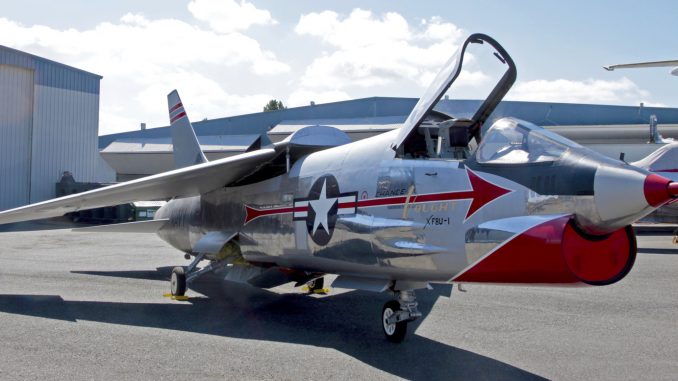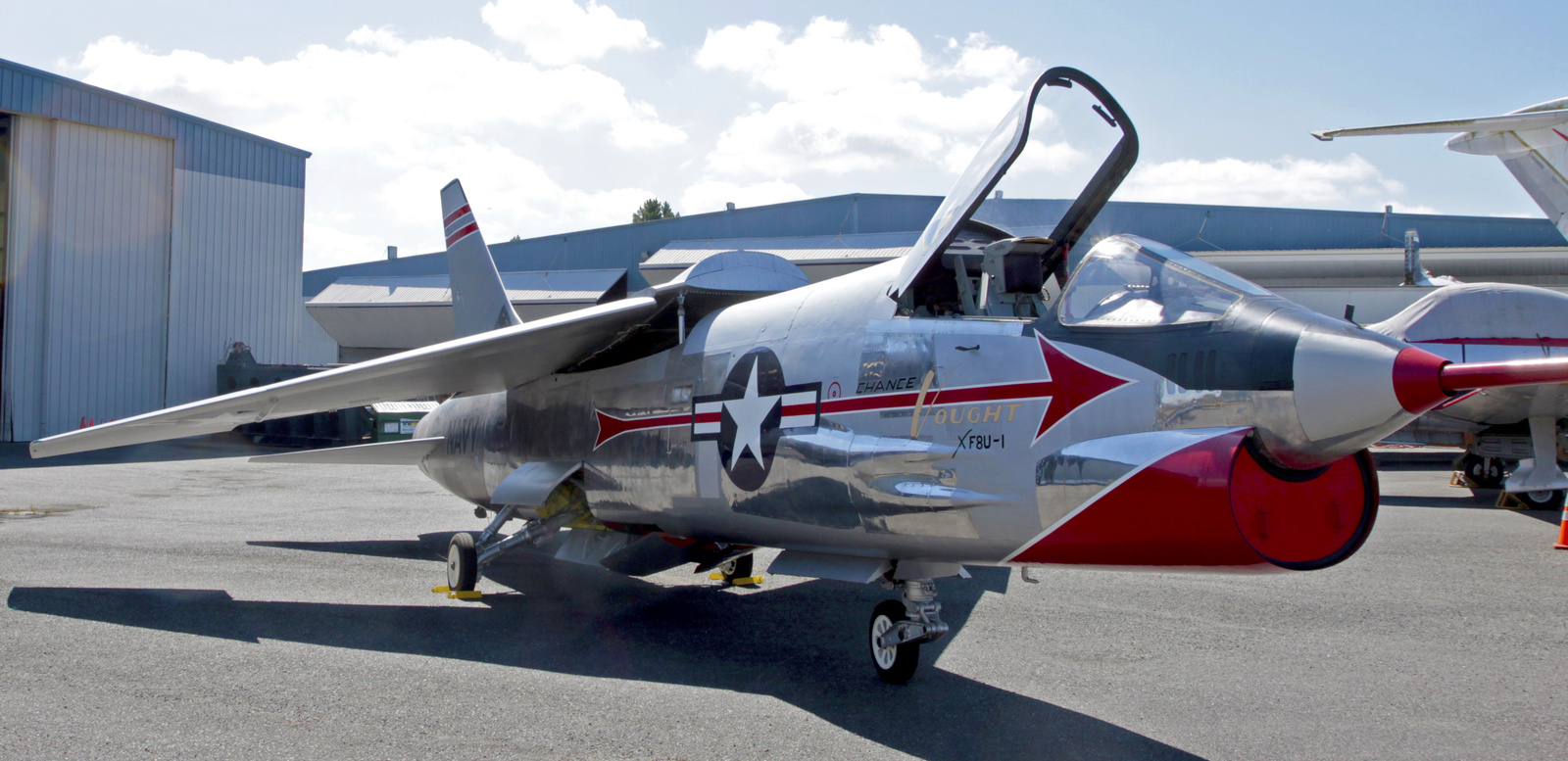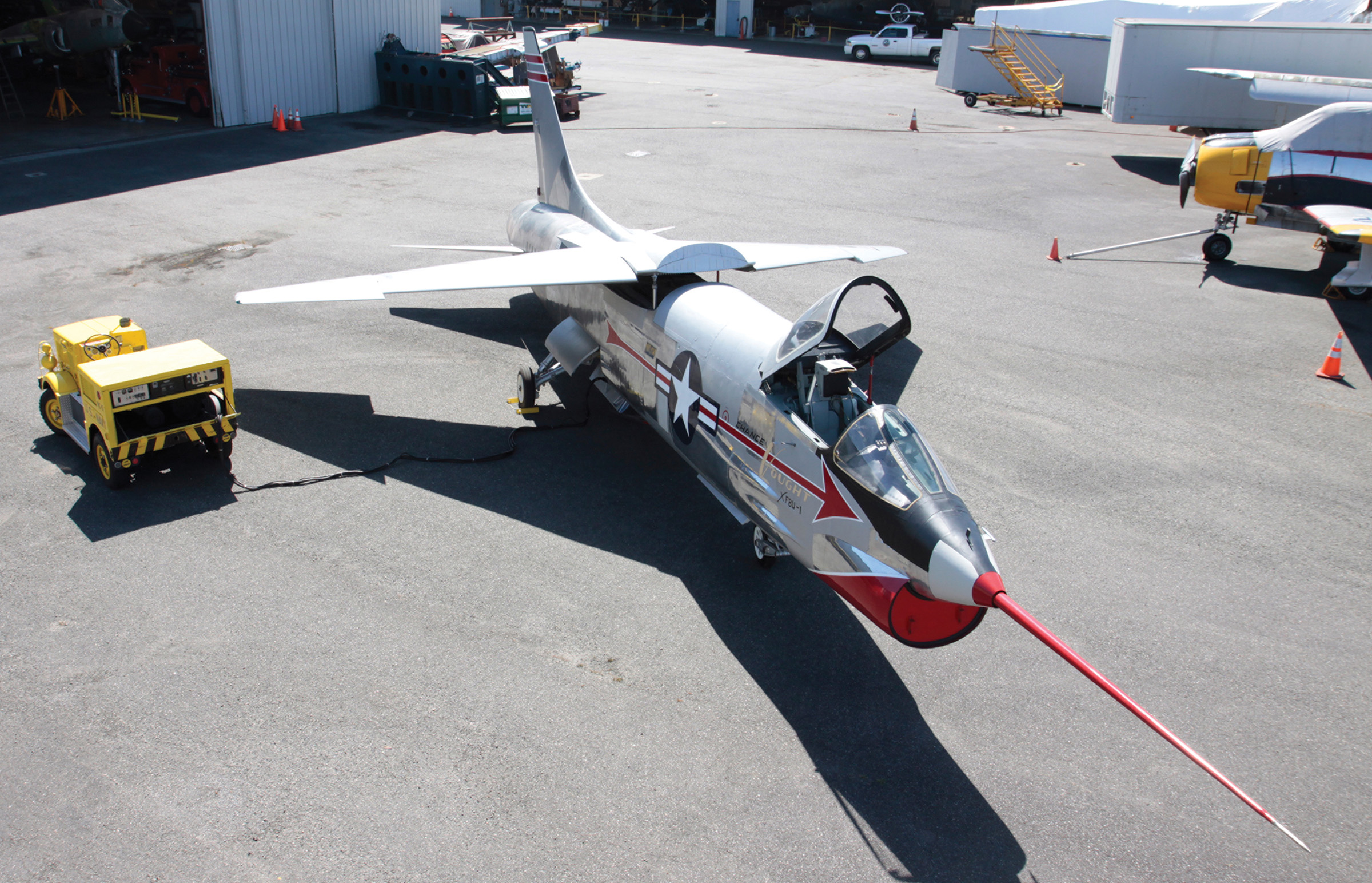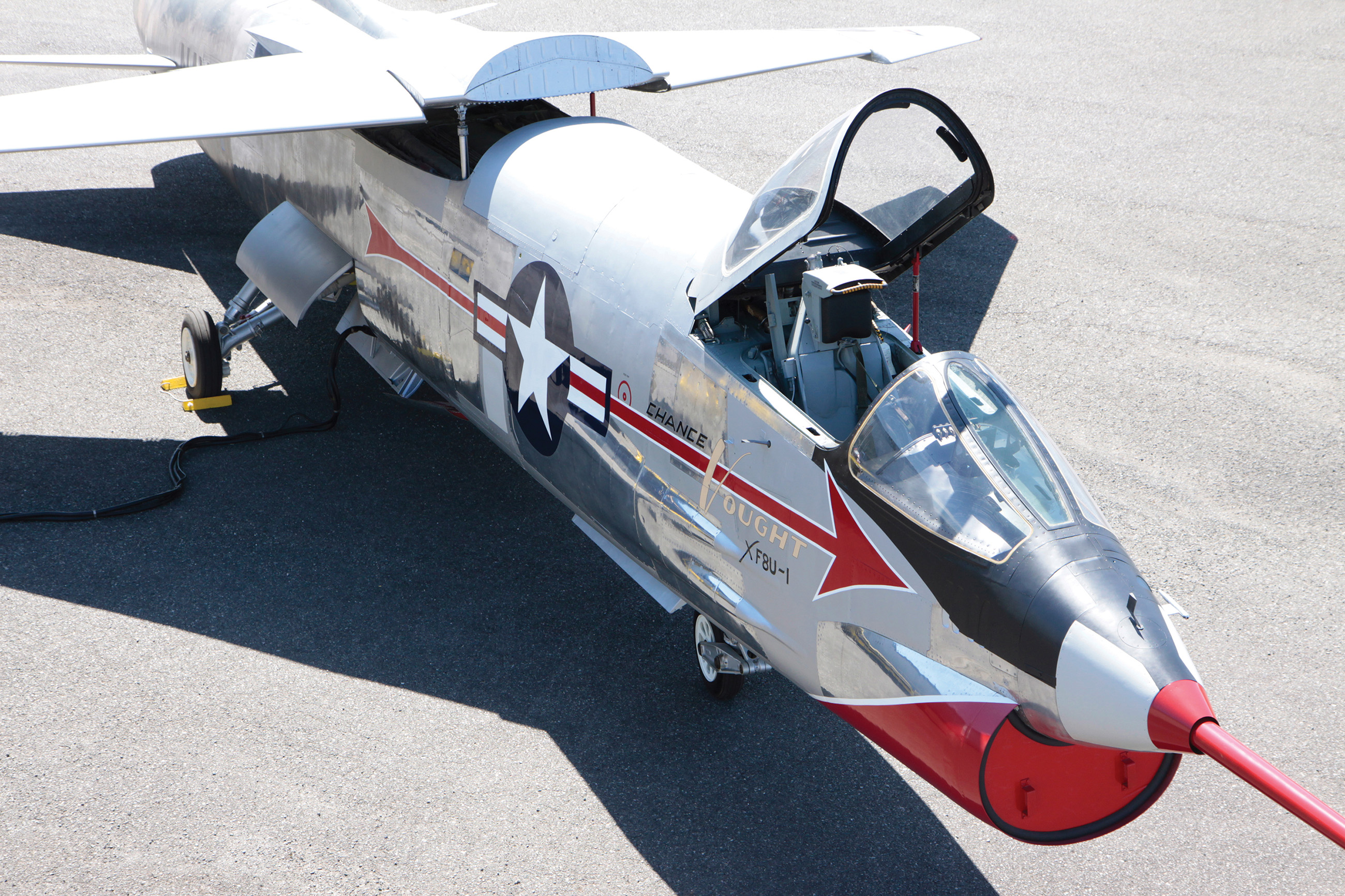

This coming Wednesday (25th March, 2015) the Museum of Flight will be holding a celebration for the 60th anniversary of the first flight of the mighty Vought F8U Crusader at the museum’s restoration center in Everett, Washington. The ceremony will begin at 11am as they publicly unveil their XF8U-1 prototype for the first time following a decades-long restoration effort. Many US Navy and Marine Corps Crusader veterans will be on hand for the event. Among the other speakers will be Dan Hagedorn, the Museum’s curator, Tom Cathcart, Director of Aircraft Collections & Restoration. The restoration team will also be well represented at the ceremony as well. Of course, the event is open to the public, with free admission to the Restoration Center for the day.

The museum’s XF8U-1 is Bu.No.138899, the very aircraft which made the type’s first flight six decades ago with pilot John Konrad at the helm. This inaugural flight saw the aircraft break the sound barrier, something never before attempted successfully on a jet’s maiden mission. The type had a relatively trouble-free development, with the second prototype XF8U-1 and the production prototype F8U-1 first flying on the same day in September, 1955. The Crusader was already in carrier trials by early April, 1956 aboard the USS Forrestal, and operational the following year. From first flight to first fleet use in just two years seems incredible in today’s climate, where modern combat aircraft take well over a decade to become operational.
The Crusader was fast as well, setting a national air speed record in level flight of 1,015.428 mph on August 21st, 1956, during its victory in the Thompson Trophy race. The following July, with John Glenn at the controls, the Crusader made the first supersonic transcontinental crossing; bridging the distance between Los Alamitos, California and Floyd Bennet Field, New York in just over three hours, twenty three minutes. Chance Vought and the US Navy received the prestigious Collier Trophy for the Crusader, “for concept, design and development of the first carrier-based fighter capable of speeds exceeding 1,000 mph.” It won the Thompson Trophy in 1956 for setting a national and world speed record of 1,015.428 miles an hour.
The Crusader received the moniker “Last of the Gunfighters” when introduced due to its internal cannon armament at a time when all other types were moving exclusively to air-to-air missiles. The Crusader was a versatile aircraft though, and got stacked with all sorts of offensive weaponry during its time in the Viet Nam War. It was also a highly effective tactical reconnaissance platform, and this was the role it was perhaps most famous for due to the remarkably dangerous but vitally important photo-recon missions flown low and fast over Cuba during the Cuban Missile Crisis in 1962. The reconnaissance role gave the type longevity as well, with the last US Navy RF-8’s retiring in 1987; more than a decade after the service’s fighter/strike variants. Amazingly though, the French Navy was still fielding Crusaders in front line units on its aircraft carriers until finally replaced by the Dassault Rafale in 2000. Forty five years as a front line aircraft is not a bad run by any measure.

The Museum of Flight’s XF8U-1 served for about five years in the test role before its retirement. The Navy gifted it to the Smithsonian’s National Air & Space Museum, but since there was no room to display it, the Crusader sat in storage at NASM’s Garber Facility, the museum loaned it to the Museum of Flight in Seattle. The loan became a gift in 2004, by which point NASM had gained a preferred operational variant. Restoration began in 1996, and the team has slowly returned her to the condition she was in back in 1955, complete with the same livery the aircraft wore. They have done a magnificent job too, and have much to be proud of!


Wish I could be there to see XF8-U1…I had the good fortune to work on the “U-Birds” with VMF-251..I hope to see the Museum some day..